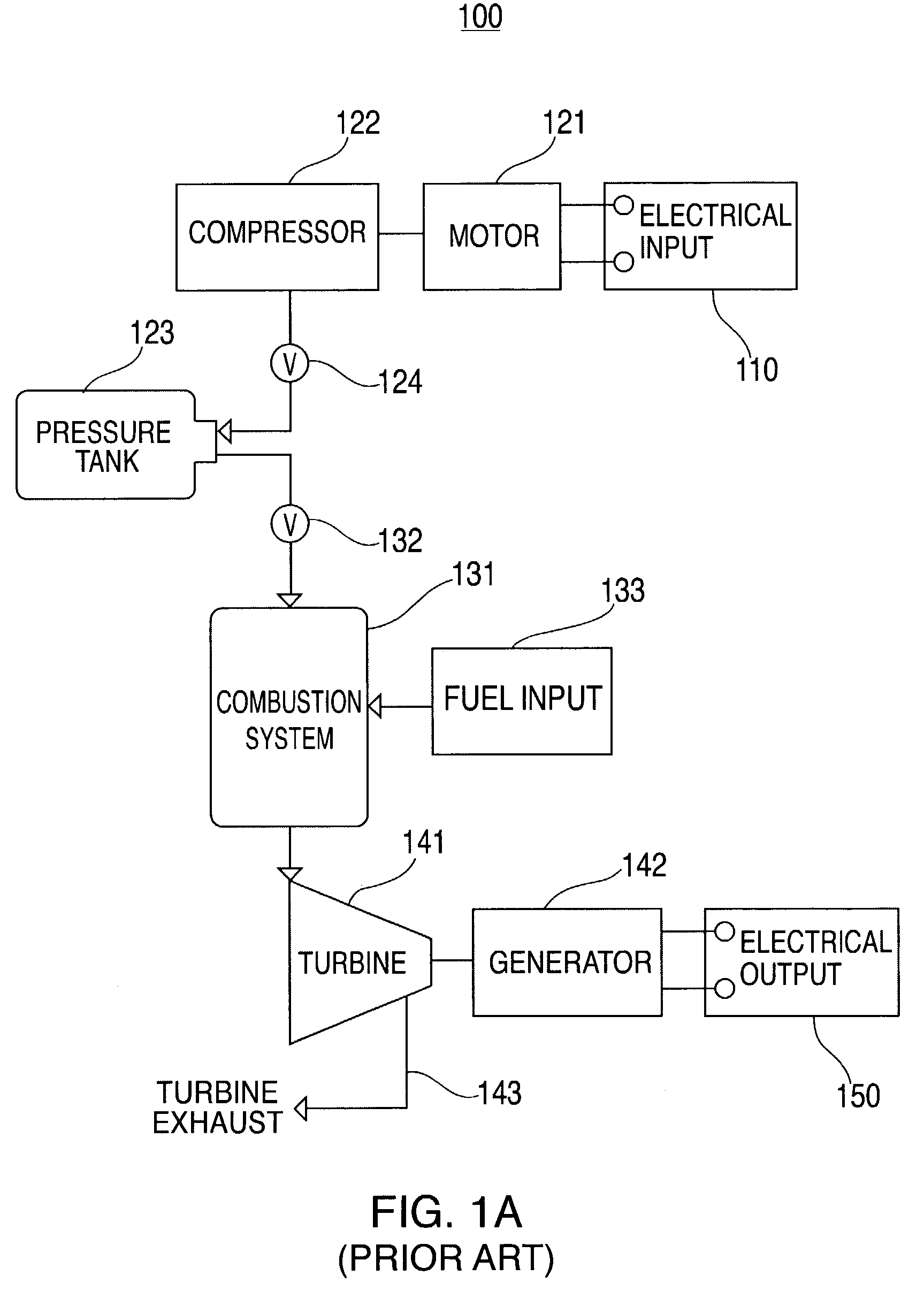Thermal and compressed air storage system
a technology of compressed air and storage system, which is applied in the direction of indirect heat exchangers, machines/engines, light and heating apparatus, etc., can solve the problems of harmful emissions, not providing the most cost-effective heating method, and high overall operating cost, so as to reduce pollution at the source, and increase efficiency
- Summary
- Abstract
- Description
- Claims
- Application Information
AI Technical Summary
Benefits of technology
Problems solved by technology
Method used
Image
Examples
Embodiment Construction
[0024]FIG. 1A shows a conventional CAS system 100 for providing output power.
[0025]CAS system 100 includes an electrical input 110 that provides input power to motor 121, which may be any conventional type of motor (e.g., a rotary electric machine). Electrical input 110 may be utility power or, for example, a battery or other short term power supply. Motor 121 is coupled to compressor 122 so that when motor 121 is receiving power from electrical input 110, it drives compressor 122. Compressor 122 supplies compressed air through a valve 124 into pressure tank 123. Compressor 122 may be any type of compressor which compacts or compresses air (e.g., atmospheric air) to occupy a smaller space inside of pressure tank 123.
[0026]As shown in FIG. 1A, pressure tank 123 is connected to compressor 122 through valve 124. It should be understood, however, that pressure tank 123 may be replaced with any other suitable type of air reservoir capable of storing compressed air. For example, an underg...
PUM
 Login to View More
Login to View More Abstract
Description
Claims
Application Information
 Login to View More
Login to View More - R&D
- Intellectual Property
- Life Sciences
- Materials
- Tech Scout
- Unparalleled Data Quality
- Higher Quality Content
- 60% Fewer Hallucinations
Browse by: Latest US Patents, China's latest patents, Technical Efficacy Thesaurus, Application Domain, Technology Topic, Popular Technical Reports.
© 2025 PatSnap. All rights reserved.Legal|Privacy policy|Modern Slavery Act Transparency Statement|Sitemap|About US| Contact US: help@patsnap.com



